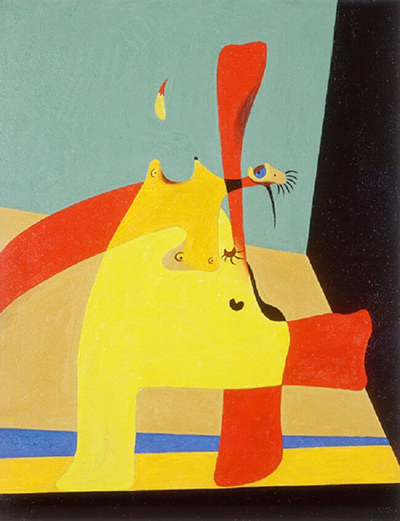Flame in Space and Female Nude arrived in 1932 and is amongst the most surreal of Miro's paintings, with a full re-arrangement of the human body in operation within this memorable portrait.
Whilst the abstraction is distinctly Miro, elements of how the figure is twisted and concorted in this painting will remind many of the likes of Francis Bacon and also some specific surrealist work from Max Ernst, such as Ubu Imperator and The Triumph of Surrealism. It is the strange juxtaposition of certain elements that scream surrealism from Miro here, though many other artworks that he produced cannot be as closely linked to this creative group. He prefered to keep his work personal and unique, accepting praise but also trying to keep a certain distance from specific groups so that he always retained a level of artistic freedom and independence. His lack of detail in the latter part of his career has made it harder for us to decipher many of his paintings, where as the likes of Dali, Magritte and Ernst would depict things accurately, but just in a fantastical arrangement that was more akin to a dream than reality. This was very much their trademark, though each took on this challenge differently.
The summer of this same year was where Miro experimented with painting on wood. In this painting we find a shocked figure leaning backwards in fear of a flame that appears in front of her. The artist amends sizing from reality to create a new normal, with the women's head being particulary small, for example. This allows the other items in the scene to take centre stage. The room interior is constructed in a simple format, with squares of colour creating the different walls. At the back they are a neutral green, with black for the other sides, perhaps suggesting the shadowing of light in those sections. There are no white tones in this painting which is unusual for the artist and overall this is a brighter piece than others from around the same period - his black tones are there, but kept on the periphery.




